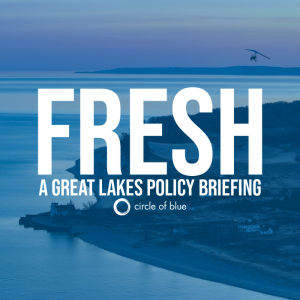Welcome to “What’s Up With Water” – your need-to-know news of the world’s water from Circle of Blue. I’m Eileen Wray-McCann.
Refugee camps in eastern Kenya are straining to accommodate huge numbers of people from neighboring Somalia who are fleeing the worst drought in more than a generation. According to the UN Refugee Agency, over a hundred thousand Somalis have entered (duh-DAHB) Dadaab refugee camps in the last two years. The population of the camps now exceeds three hundred thousand. Though the camps are short of water, food, and shelter, their conditions are still an improvement for the refugees. Somalia has had five below normal rainy seasons in a row. Cattle are dying and food is scarce. The UN Refugee Agency estimates that drought has forced close to two million people in Ethiopia and Somalia to abandon their homes. The agency is asking donors to increase support for food, shelter, medicine, and water in the camps.
Countries in Europe have had a shockingly dry winter and are now preparing for yet another hot, dry summer. Reuters reports that snowfall in the Alps is half of normal. This winter, France went 32 days without rain, for its longest cold-season drought on record. In Italy, rivers in prime farming regions are well below normal levels. Government officials in both countries are developing emergency plans to restrict water use in the coming months. They fear a repeat of last summer, when high temperatures and cloudless days damaged harvests and crippled shipping on major waterways.
In the American Southwest, water shortages are a perpetual fear. Nevada legislators have introduced a bill to give the arid state’s largest city more control of residential water use, giving officials another way to respond to the region’s drying climate. The bill targets the highest water users in the Las Vegas area, which gets its water from the shrinking Colorado River. If passed, the bill would allow the regional water provider to restrict how much water a single-family home can use each year. The limit would be slightly over 160 thousand gallons a year. According to KLAS, most families would not be affected. According to the regional water provider, the average household uses about 100,000 gallons per year for cooking, drinking, bathing, laundry, and landscaping. The largest water users in Las Vegas are a smaller subset. Just 20 percent of the properties in the area use about 40 percent of the its residential water. Wealthier neighborhoods tend to use more water for their their expansive lawns and landscaping. The highest-volume water users in the Las Vegas area consume millions of gallons per year. These are the properties lawmakers are targeting. Nevada lawmakers have already signaled that water conservation is important. Two years ago they passed a bill that prohibits “non-functional” turf in Las Vegas. That category includes grass in highway medians and office parks.
And that’s What’s Up With Water from Circle of Blue, where water speaks. You’ll find more news and analysis – and a chance to support our work – at
circleofblue.org. This is Eileen Wray-McCann – thanks for being here.





